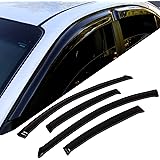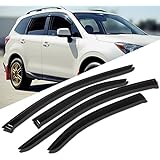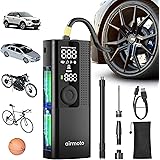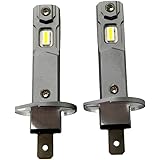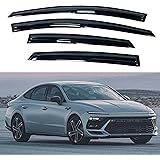Table of Contents
Replacing a cylinder in an engine is a complex task. It needs careful planning and a deep understanding of engine mechanics. Experienced DIY enthusiasts can try it, but it’s not for beginners.
The cylinder replacement process has several key steps. You’ll need to disassemble the engine, find the faulty cylinder, and install a new one. This guide will show you how to do it, including the tools you’ll need and common challenges.
Knowing how to repair an engine cylinder is key to a successful replacement. This guide will give you a detailed overview. It will help you feel ready to take on this complex task.
Key Takeaways
- Understanding the complexity of engine cylinder replacement is crucial.
- The cylinder replacement process involves several critical steps.
- Having the right tools is essential for a successful DIY cylinder replacement.
- Engine cylinder repair requires careful planning and execution.
- This guide provides a comprehensive overview of the replacement process.
Understanding Engine Cylinders and Their Function
Knowing about engine cylinders is key to understanding how your car works. These chambers are where fuel turns into power, making your car move.
What Is an Engine Cylinder?
An engine cylinder is a vital part of your car’s engine. It’s where fuel burns, creating the power to move your vehicle.
How Cylinders Work Within the Engine System
Cylinders work together with other engine parts. They go through four stages: intake, compression, power, and exhaust. This cycle is essential for the engine to work.
The cylinders are set up in lines or V-shapes, depending on the engine. It’s here that the air-fuel mixture is ignited, making power.
Common Types of Engine Cylinders
There are several types of engine cylinders:
- In-line cylinders, where cylinders are aligned in a straight line.
- V-type cylinders, arranged in a V configuration.
- Boxer cylinders, where cylinders are horizontally opposed.
Each type has its own benefits and fits different engine designs and car types.
The Relationship Between Cylinders and Other Engine Components
Cylinders work closely with other engine parts like the crankshaft, camshaft, and valves. The crankshaft converts the up-and-down motion of the pistons into rotational energy. The camshaft controls the valves for air and fuel in and exhaust out.
For the engine to work well, all parts must work together. Knowing how cylinders and other parts interact helps with engine care and fixing.
Signs That Your Engine Cylinder Needs Replacement
Knowing when your engine cylinder needs to be replaced is key to keeping your car running well. Over time, engine cylinders wear out and can fail. This failure can cause many problems.
Performance Issues Indicating Cylinder Problems
One of the first signs of a cylinder problem is a drop in engine performance. You might find it harder to accelerate or keep up speed. Also, you could see a drop in fuel efficiency because of a bad cylinder.
Other signs include:
- Misfires or rough idling
- Difficulty starting the engine
- A noticeable decrease in overall engine power
Unusual Sounds and Vibrations
Strange sounds or vibrations from the engine can point to a cylinder issue. For example, a knocking or tapping noise might mean a problem with the piston or valves. Also, excessive vibration while running could mean an unbalanced cylinder.
Visual Inspection Signs
A visual check can show signs of cylinder damage. Look for leaks around the cylinder head or block. These leaks can mean a damaged cylinder. Also, excessive smoke from the exhaust might mean oil is leaking into the cylinder and being burned.
Diagnostic Tests to Confirm Cylinder Damage
While signs like these can hint at cylinder damage, tests are needed to confirm it. Mechanics might use compression tests or leak-down tests to check the cylinders. These tests can show which cylinder is damaged and how badly.
By knowing these signs and acting quickly, you can avoid more damage to your engine. This ensures your car keeps running smoothly.
Can You Replace a Cylinder in an Engine?
Understanding if you can replace a cylinder in your engine is complex. It depends on the engine type, damage extent, and the person’s technical skills.
Technical Feasibility of Cylinder Replacement
Replacing a cylinder is possible but not easy. Modern engines have complex systems that make it hard. Yet, with the right tools and knowledge, it can be done.
The process includes taking apart the engine, checking the cylinder block, and putting in a new cylinder. It needs precision and a deep understanding of engine mechanics.
When Replacement Is Possible vs. When It’s Not
Deciding to replace a cylinder depends on the damage and engine condition. If only one cylinder is damaged and the engine is mostly fine, replacement might work.
But, if many cylinders are damaged or the engine is worn out, rebuilding or replacing it might be better.
| Condition | Replacement Feasibility |
|---|---|
| Localized damage to one cylinder | High |
| Multiple cylinders damaged | Low |
| Significant engine wear | Low |
Replacement vs. Complete Engine Rebuild Considerations
Choosing between replacing one cylinder or rebuilding the engine involves several factors. These include part and labor costs, and the engine’s condition.
A complete engine rebuild might cost more but could last longer, if the engine is old or worn.
- Cost of parts and labor
- Engine condition and age
- Expected lifespan after repair
Engine Types and Their Cylinder Replacement Complexity
Engine types vary in complexity for cylinder replacement. Inline engines are simpler than V-type engines.
Inline engines are easier to work on because of better access to cylinders. V-type engines are more complex due to their design, making replacement harder.
Tools and Materials Needed for Cylinder Replacement
Before starting cylinder replacement, knowing the tools and materials needed is key. The right equipment makes the job easier, safer, and more efficient.
Essential Hand Tools
Hand tools are crucial for cylinder replacement. You’ll need:
- Wrenches and sockets for loosening and tightening engine parts.
- Pliers and punches for gripping and removing parts.
- Screwdrivers for handling screws and other fasteners.
A good set of these tools is essential for working on the cylinder.
Specialized Engine Tools
Specialized tools are also vital for cylinder replacement. These include:
- Cylinder sleeve puller for removing the old sleeve.
- Precision measuring tools for checking cylinder dimensions and clearances.
- Engine-specific tools for your engine type.
These tools help with the precise work needed for replacement.
Replacement Parts and Materials
For replacement, you’ll need specific parts and materials, such as:
- New cylinder sleeve or the entire cylinder assembly, depending on the engine.
- Piston and ring set if the piston is being replaced.
- Gaskets and seals for leak-free connections.
- Engine coolant and oil for refilling after replacement.
It’s important to get these parts from trusted suppliers for quality and fit.
Safety Equipment
Safety is a top priority. Essential safety gear includes:
- Safety glasses to protect your eyes from debris.
- Gloves for hand protection against sharp edges and chemicals.
- Ear protection when using loud tools or machinery.
- Fire extinguisher as a fire safety measure.
Using the right safety gear reduces the risk of injury during replacement.
Preparing Your Workspace for Engine Cylinder Replacement
Getting your workspace ready is crucial for a smooth engine cylinder replacement. A tidy workspace boosts efficiency and keeps you safe.
Creating a Suitable Work Environment
First, make sure your workspace is perfect for the job. Good lighting, fresh air, and a clean area are must-haves. A well-lit workspace helps avoid mistakes, and proper ventilation keeps harmful fumes away.
- Ensure the workspace is well-lit, either naturally or through the use of appropriate lighting.
- Provide adequate ventilation to prevent the accumulation of harmful fumes.
- Keep the workspace clean and organized to prevent accidents.
Vehicle Preparation Steps
Before starting, get your vehicle ready. This means making sure it’s stable and safe.
- Park your vehicle on a level surface and apply the parking brake.
- Use jack stands to secure the vehicle, ensuring it does not fall off the jack.
- Disconnect the battery to prevent any accidental engine starts.
Organization Tips for Parts and Tools
Being organized is key for a successful engine cylinder replacement. Having everything you need close by saves time and effort.
Organizing your tools and parts means sorting them by use. Use a toolbox or parts organizer to keep things tidy.
Safety Precautions Before Starting
Safety is always first when working on your vehicle. Taking the right precautions prevents injuries and keeps you safe.
“Safety is not just a precaution, it’s a mindset.” – Unknown
- Wear protective gear, including gloves and safety glasses.
- Ensure the workspace is free from flammable materials.
- Have a fire extinguisher nearby.
Step-by-Step Engine Disassembly Process
Disassembling the engine is a key step when replacing a damaged cylinder. It requires careful attention to detail. The process involves several steps that must be done in order to ensure safety and efficiency.
Disconnecting the Battery and Electrical Components
The first step is to disconnect the battery to prevent accidental engine starts. Ensure the ignition is off, then disconnect the negative battery cable. Next, find and disconnect other electrical components like the alternator, starter motor, and sensors.
Draining Fluids and Removing Accessories
Before disassembling, it’s important to drain the engine fluids. This includes oil and coolant to prevent spills and harm to the environment. Use the right containers for the fluids. After draining, take off any engine accessories like the power steering pump and air conditioning compressor.
Removing Intake and Exhaust Components
The intake and exhaust components, including manifolds and piping, must be removed. Start by disconnecting hoses and electrical connectors. Then, remove the bolts holding the manifolds to the engine block.
Cylinder Head Removal Procedure
Removing the cylinder head is a delicate task. It needs careful handling to avoid damage. Start by removing the valve cover, then loosen the cylinder head bolts in a star pattern. Once the bolts are off, lift the cylinder head off the engine block carefully.
Cylinder Inspection and Damage Assessment
A detailed cylinder inspection is key to figuring out the damage and what to do next. It looks for any wear or damage that might hurt engine performance.
Evaluating Cylinder Wall Damage
Cylinder wall damage can really hurt engine efficiency. Look for scoring, scuffing, or excessive wear on the walls. These problems can make the engine run worse and might cause bigger issues if not fixed.
Engine repair experts say, “Cylinder wall damage often comes from bad maintenance or too much engine stress.”
“Regular checks and upkeep can stop this damage and keep the engine running long.”
Checking for Cracks and Deformation
Cracks and deformation in the cylinder can cause big engine problems. Look for these with a visual check and use tools like dye penetrant tests to find cracks.
- Check the cylinder head and block for any visible cracks.
- Use a dye penetrant test to find small cracks you can’t see.
- Measure the cylinder’s size to check for deformation.
Measuring Cylinder Dimensions
It’s important to measure the cylinder’s size to check its condition. Use a bore gauge or dial caliper to measure the diameter at different points. Compare these to the specs from the maker to see if it’s okay.
Determining If Repair or Replacement Is Needed
After checking the cylinder, decide if it can be fixed or if it needs to be replaced. Think about the damage, repair costs, and the engine’s state.
“Often, a damaged cylinder can be fixed by honing or reboring. But if the damage is too much, replacing it might be cheaper in the long run.”
So, a detailed cylinder inspection and damage check are vital for making smart engine repair choices.
Cylinder Replacement Procedure
Replacing a cylinder in your engine is a detailed process. It includes removing the damaged cylinder, preparing the engine block, installing the new cylinder, and securing it. This guide will help you through each step for a successful replacement.
Removing the Damaged Cylinder
The first step is to remove the damaged cylinder. You need to carefully take apart the engine parts around the cylinder, like the piston and connecting rod. It’s important to handle these parts gently to avoid more damage to the engine.
Key steps in removing the damaged cylinder include:
- Disconnecting the piston from the connecting rod
- Removing any retaining rings or clips holding the piston in place
- Carefully extracting the piston and connecting rod assembly from the cylinder bore
Preparing the Engine Block for New Cylinder
After removing the damaged cylinder, prepare the engine block for the new one. This means checking the cylinder bore for damage or debris and cleaning it well.
Preparation steps include:
- Inspecting the cylinder bore for damage or wear
- Cleaning the cylinder bore to remove any debris or residue
- Checking the engine block for any signs of cracking or deformation
Installing the Replacement Cylinder
With the engine block ready, install the replacement cylinder. This involves putting the new cylinder liner into the engine block, making sure it fits right and is aligned.
Installation steps include:
- Applying a suitable lubricant to the new cylinder liner
- Carefully inserting the liner into the engine block
- Ensuring the liner is properly aligned with the engine block’s mounting holes
Securing the New Cylinder
The last step is to secure the new cylinder. This means tightening the cylinder head bolts to the right torque and making sure all parts are in place.
The following table outlines the typical torque specifications for securing a new cylinder:
| Component | Torque Specification (ft-lbs) |
|---|---|
| Cylinder Head Bolts | 30-40 |
| Main Bearing Bolts | 60-80 |
| Connecting Rod Bolts | 20-30 |
After finishing the cylinder replacement, check the work and test the engine. This ensures everything works right.
Reassembling the Engine After Cylinder Replacement
Reassembling the engine after replacing a cylinder is a detailed task. It needs patience and focus to ensure everything fits right. This step is key to making sure the engine works well.
Reinstalling the Cylinder Head
Putting the cylinder head back on is a big part of engine reassembly. First, clean the head and engine block to remove any dirt. Then, put on a new head gasket and gently place the head on.
Use a torque wrench to tighten it. The manual by Robert Bosch GmbH says to tighten it in a certain order. This prevents damage to the engine.
Reconnecting Intake and Exhaust Components
After the head is on, reconnect the intake and exhaust parts. Start with the intake manifold, making sure it fits well and is secure. Then, connect the exhaust manifold, tightening all bolts correctly.
Experts say it’s important to do this right. It prevents leaks and keeps the engine running smoothly.
Reinstalling Peripheral Systems
Next, put back the alternator, power steering pump, and air conditioning compressor. Make sure all belts are in the right place and the right tension. The “The Chilton Automotive Repair Manual” advises on belt tension for longevity.
Final Assembly Checks
After everything is back together, do a detailed check. Look over all connections and fasteners to make sure they’re tight and right. For the last step, check the repair manual for any final checks or tests.
Experts say a careful final check can save you from expensive repairs later.
Post-Replacement Testing and Break-In Procedures
After replacing the engine cylinder, it’s key to test and break in the engine. This ensures it runs smoothly. It’s a critical step to check the quality of the replacement and the engine’s performance.
Initial Start-Up Precautions
Before starting the engine, take some important steps. Make sure all connections are tight and the oil level is right. Also, check for leaks around the new cylinder.
Engine Break-In Process
The engine break-in process is about running the engine in a controlled way. This helps wear in the new cylinder. It includes:
- Running the engine at moderate RPMs for the first few hours.
- Avoiding extreme loads or high speeds initially.
- Monitoring engine temperature and oil pressure.
A good break-in is key for the engine’s long life and performance.
Performance Testing
After the break-in, test the engine’s performance. Check its power, fuel efficiency, and smoothness.
Monitoring for Issues
Keep an eye out for any unusual signs like noises, vibrations, or leaks. Catching problems early can prevent bigger damage.
| Break-In Parameter | Recommended Value | Monitoring Frequency |
|---|---|---|
| Engine RPM | Moderate (1500-2500 RPM) | Continuous |
| Engine Load | Avoid extreme loads | During use |
| Oil Pressure | Within manufacturer’s specs | Daily |
By following these steps, you can make sure your engine works well after a cylinder replacement.
Troubleshooting Common Issues After Cylinder Replacement
After replacing a cylinder, it’s important to troubleshoot to keep the engine running well. Several problems can pop up, affecting how the engine performs.
Addressing Oil Leaks
Oil leaks are a common problem after a cylinder is replaced. Check the gaskets and seals around the new cylinder for leaks. Make sure all connections are tight and gaskets are in place. If leaks keep happening, you might need to replace the gaskets or get help from a pro.
Resolving Performance Problems
Performance issues like less power, poor fuel efficiency, or rough idling can occur. To fix these, check the engine’s tuning and make sure the new cylinder works right with the engine. You might need to adjust the engine’s computer or the fuel injection system.
Also, check the air and fuel filters for blockages or dirt. These can really hurt the engine’s performance.
Dealing with Unusual Noises
Strange noises after a cylinder replacement can be scary. They might be from loose parts, wrong installation, or engine timing problems. Look in the engine compartment to find where the noise is coming from and fix it.
If the noise doesn’t go away, you might need to go back to the repair or get a mechanic’s help.
When to Revisit the Repair
If oil leaks, performance issues, or odd noises keep happening, it’s time to check the repair again. Look over the cylinder replacement to see if you missed anything or could do better.
Going back to the repair might mean looking at the repair manual or talking to a mechanic.
Professional vs. DIY Cylinder Replacement
Car owners face a big decision when they need to replace an engine cylinder. They must choose between doing it themselves or getting professional help. This choice is key to a successful and affordable repair.
When to Attempt DIY Replacement
DIY cylinder replacement is good for those with mechanical skills and the right tools. It’s important to know your abilities and the job’s complexity. If you’ve worked on engines before and have the right tools, DIY might save you money.
Key considerations for DIY:
- Experience with engine repairs
- Availability of specialized tools
- Understanding of engine mechanics
When to Seek Professional Help
If you’re not sure about the replacement or lack tools and experience, get professional help. Mechanics have the training and tools to do the job right and fast.
Benefits of professional help include:
- Guaranteed work quality
- Access to specialized tools and technology
- Warranty on the repair
Cost Comparison
The cost of DIY versus professional service can differ a lot. DIY might seem cheaper at first, but think about extra costs if problems come up. Professional services might cost more upfront but often come with warranties and guarantees that save money later.
| Cost Factor | DIY | Professional |
|---|---|---|
| Parts | $X | $X + markup |
| Labor | $0 (your time) | $Y (professional labor cost) |
| Total | $X | $X + $Y + markup |
Time and Skill Considerations
Time and skill are important when choosing DIY or professional cylinder replacement. DIY takes more time and effort, while a mechanic can do it faster. Think about how much time you have and your mechanical skills before deciding.

Conclusion
Replacing a cylinder in your engine is a complex task. It needs careful planning and thought. Whether you try it yourself or get a professional, knowing the steps is key to success.
Choosing to do it yourself or hire a pro depends on your skills, the engine’s complexity, and your budget. DIY might save money, but think about the risks and challenges first.
This guide helps you make a smart choice and tackle the replacement confidently. Consider tools, technical skills, and risks when deciding to DIY or get a pro.


